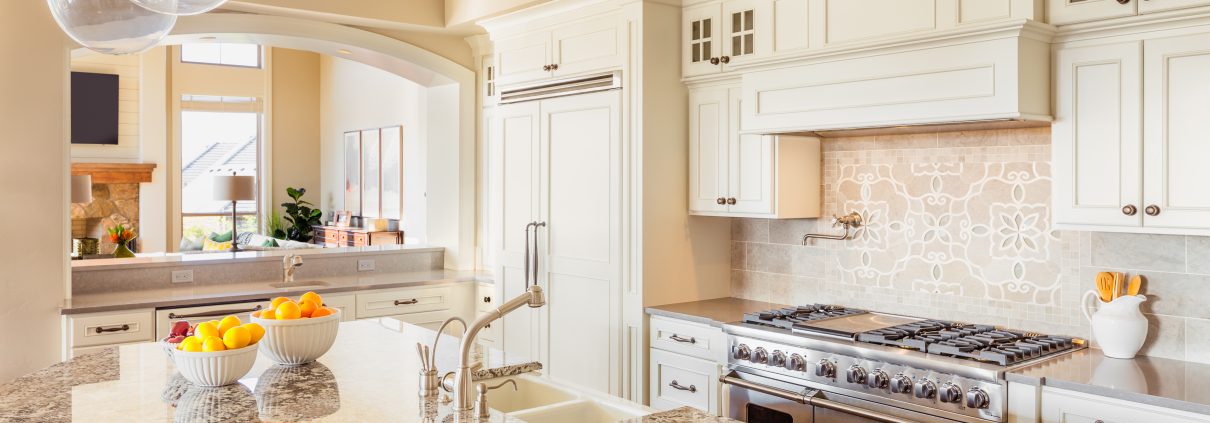Marble vs Granite: How to Choose?
Marble and granite are both beautiful, natural types of stone used in homes and offices in a variety of architectural and interior design styles, from kitchen counters to fireplace surrounds to range hoods. If you have your heart set on marble, granite isn’t exactly a simple substitute. Granite is beautiful in its own right, but it looks quite different.
However, they’re not the same, and granite isn’t simply a cheaper substitute for marble, contrary to popular belief. These stones have very different physical properties, different aesthetic qualities, and may be suitable for different applications.
Physical Properties & General Appearance
Granite is a granular igneous rock, composed primarily of feldspar, quartz, mica, and amphibole minerals. Granite is very hard and durable, ranging from a 6 to a 7 on the Mohs hardness scale, and is a porous stone. It naturally occurs in a variety of colors, including black, beige, grey, and even red and blue hues. Shades tend to range from medium to dark, and have a characteristic speckled appearance.
Marble, also a porous stone, is a very different type of rock. It’s a metamorphic rock, usually composed primarily of calcite or dolomite. Ultimately, it’s derived from limestone that’s been subjected to high temperatures and pressures. Different types of marble are often classified by their region of origin, and colors can range from snowy white to deep green hues. Marble has a more distinctive patterning to it than granite, with bold veins running through it.
Durability & Heat Resistance
Cheap, synthetic countertop materials like laminate can resemble the look of marble countertops and granite countertops, but there’s no real substitute for the timeless look and feel of real natural stone.
If you’re not sure which one to choose, it’s worth considering your decor style, your lifestyle, and what exactly you’re using the stone for. For kitchen countertops, marble and granite are both quite popular choices.
However, marble has some drawbacks. For one, it’s rather soft. On the Mohs scale, it comes in at a 3 or 4. For reference, soapstone rates a 1, and is no harder than talc, but granite usually rates 6 or 7. Granite definitely resists staining and etching (scratching) better than marble, and for kitchen use, that can be an important concern — especially if you have children.
We mentioned above that marble is also more vulnerable to staining than granite — you should be aware that this includes water stains. This is usually more pronounced with white or light-colored marble countertops. The porous stone develops a distinct patina over time — some people consider that a flaw, while others embrace it. It’s really a matter of personal taste.
Both marble and granite counters are relatively heat resistant, which is part of why they’re such popular choices for kitchen use. Care should still be taken with hot pans and pots, but both stones can handle heat without suddenly cracking.
In addition, it’s also important to be aware that both types of stone are very vulnerable to acidic liquids and foods – these substances can cause the stone to dissolve, even in weak solutions. Care must be taken to immediately clean your stone countertops immediately after contact with these substances. Be careful not to use cleaners that contain acids or alkalines on marble or granite, as well; although granite is more resistant to acid staining and etching, the stone can still degrade over time. Even a single application of these substances can do irreparable harm as they dissolve the weaker particles of the stone.

Architecture & Interior Design
If you’re using marble or granite for architectural features like columns or for flooring, appearance is often a major factor in your decision. There’s certainly a romantic element to marble columns and pillars, channeling the architectural marvels of antiquity. If you prefer the look of marble to granite, it’s a good choice. Despite its flaws and relative softness, there’s a good reason why marble has been used in architecture for thousands of years. Marble’s elegance can be a disadvantage, however, for certain decor styles. If your style is a bit more rustic or rough-hewn, granite is often a better fit aesthetically.
How to Choose
There are two key factors in your decision between marble and granite: aesthetic concerns and practical concerns. For kitchen counters in well-used kitchens, or for flooring and architectural elements in high traffic areas, granite’s durability and resistance to staining and etching can be easier to work with. However, the aesthetics of marble, its evocation of luxury and classical elegance, are one of its major draws. If that’s what you’re after, you can’t get the same look with granite.
Should you need assistance choosing the best natural porous stone for your needs, we can help. From the initial concept to final installation, our professionals are available to bring your vision to reality with granite and marble features for your home, business, building, or property. Contact us today and let us know how we can help you get started with your marble or granite stone countertop, fireplace surround, columns, water fountains, kitchen hoods, or any other feature you need custom-made.



